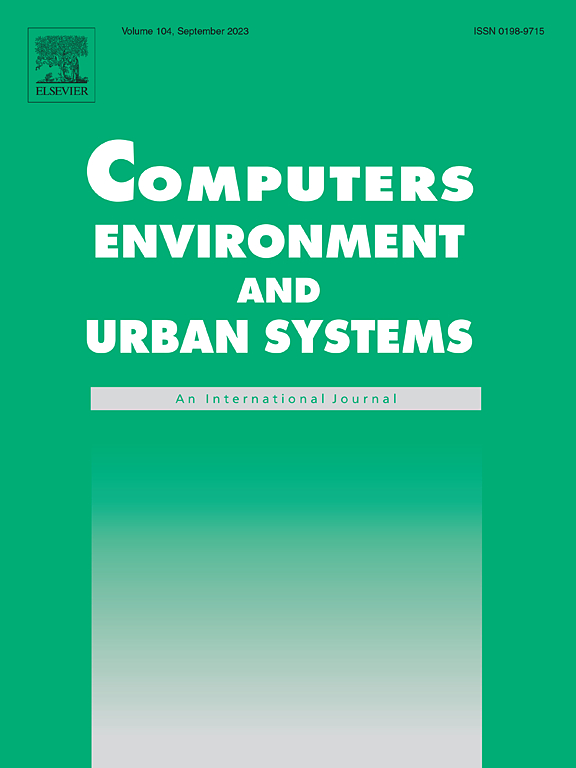Activity-based simulations for neighbourhood planning towards social-spatial equity
IF 8.3
1区 地球科学
Q1 ENVIRONMENTAL STUDIES
Computers Environment and Urban Systems
Pub Date : 2024-12-20
DOI:10.1016/j.compenvurbsys.2024.102242
引用次数: 0
Abstract
Urban planners use static analysis techniques like network and proximity analysis to evaluate a neighbourhood's accessibility. However, these techniques do not adequately capture the distributional effects of accessibility on individuals. This paper introduces an activity-based model that simulates residents' daily activities to assess the distributional effects of the built environment (BE) on their accessibility. The model consists of a pipeline to generate a synthetic population covering 96 neighbourhoods in Gothenburg, Sweden, performs origin and destination assignment, and supports four travel modes and different activity types. The synthetic population and the travel demand model are validated across demographic and travel survey data. Additionally, we introduce Trip Completion Rate (TCR), an indicator of distributional accessibility and apply our model to a proposed redevelopment plan for a neighbourhood in Gothenburg to demonstrate its utility.
The results show that techniques used in transportation research can be effectively applied to neighbourhood planning, providing planners with insights into residents' ability to fulfil their daily needs. An advantage of our model is its ability to generate synthetic residents for a neighbourhood and then simulate how changes in the BE affect the resident's ability to achieve their daily needs, thus switching the focus of the analysis from the neighbourhood BE to including the residents that live in it. This paper extends the application of techniques used in transportation planning to neighbourhood planning, thereby empowering urban planners to create more equitable neighbourhoods.
面向社会空间公平的社区规划活动模拟
城市规划者使用网络和邻近分析等静态分析技术来评估社区的可达性。然而,这些技术并没有充分捕捉到可达性对个体的分布效应。本文介绍了一个基于活动的模型,通过模拟居民的日常活动来评估建筑环境对可达性的分布效应。该模型由一个管道组成,生成覆盖瑞典哥德堡96个社区的合成人口,执行起源和目的地分配,并支持四种旅行模式和不同的活动类型。通过人口统计和旅游调查数据验证了综合人口和旅游需求模型。此外,我们引入了出行完成率(TCR),这是一个分布可达性的指标,并将我们的模型应用于哥德堡一个社区的拟议重建计划中,以证明其实用性。结果表明,交通研究中使用的技术可以有效地应用于社区规划,为规划者提供有关居民满足其日常需求的能力的见解。我们的模型的一个优点是它能够为社区生成合成居民,然后模拟BE的变化如何影响居民实现其日常需求的能力,从而将分析的重点从社区BE转移到包括居住在其中的居民。本文将交通规划中使用的技术扩展到社区规划中,从而使城市规划者能够创造更公平的社区。
本文章由计算机程序翻译,如有差异,请以英文原文为准。
求助全文
约1分钟内获得全文
求助全文
来源期刊

Computers Environment and Urban Systems
Multiple-
CiteScore
13.30
自引率
7.40%
发文量
111
审稿时长
32 days
期刊介绍:
Computers, Environment and Urban Systemsis an interdisciplinary journal publishing cutting-edge and innovative computer-based research on environmental and urban systems, that privileges the geospatial perspective. The journal welcomes original high quality scholarship of a theoretical, applied or technological nature, and provides a stimulating presentation of perspectives, research developments, overviews of important new technologies and uses of major computational, information-based, and visualization innovations. Applied and theoretical contributions demonstrate the scope of computer-based analysis fostering a better understanding of environmental and urban systems, their spatial scope and their dynamics.
 求助内容:
求助内容: 应助结果提醒方式:
应助结果提醒方式:


